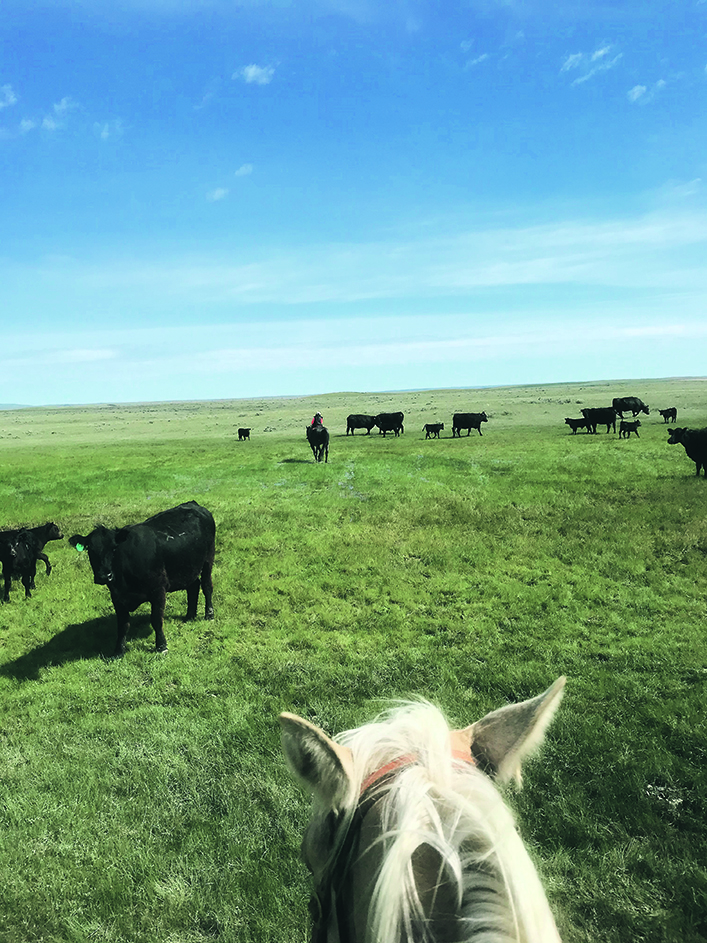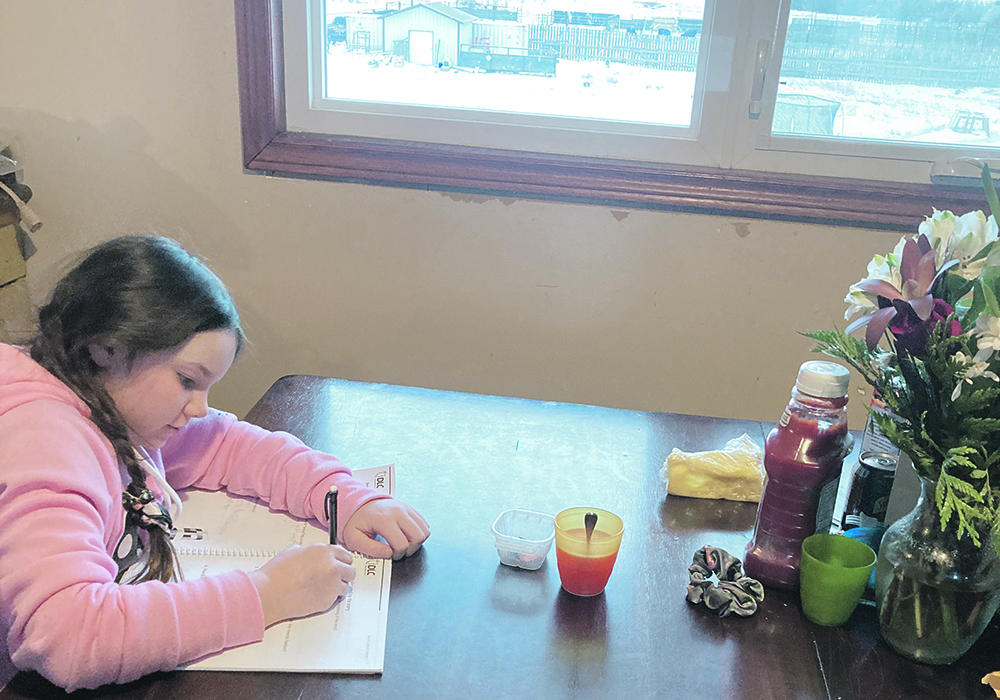Georgia Pawlitza doesn’t need to catch the school bus each morning anymore and she doesn’t miss it.
Having an extra hour to sleep in is awesome, said the Grade 11 Hazlet, Sask., student.
“Riding the bus I’d either have to be up at 6:30 or 7, depending on what day the kindergartens would go into school. Now I probably get out of bed at 8:30 and then I just stroll to the kitchen and start school,” said the 16-year-old.
In September, Pawlitza moved her education home, using the Sun West Distance Learning Centre.
Read Also

Agri-business and farms front and centre for Alberta’s Open Farm Days
Open Farm Days continues to enjoy success in its 14th year running, as Alberta farms and agri-businesses were showcased to increase awareness on how food gets to the dinner plate.
Since March, the pandemic has been a catalyst of sorts, prompting many farm and ranch children to continue their education through distance learning at home.
Many see it as an opportunity that allows them to complete schoolwork without missing out on day-to-day activities that include raising animals and harvesting crops.
Weighing the pros and cons of distance learning since the pandemic started in March has encouraged Pawlitza to stay home full time.
“It’s been really good. It’s given me a lot more opportunities to be involved in the ranching half of my life, as well as be active in my education with school. I love that I can be more involved with being at home and getting the chance to ride my horse way more often, or do some work on showing sale cattle and get the chance to learn a lot more from my parents and work alongside my brother,” she said.
However, it was a stressful time for the Mackie family near Consul, Sask., when the pandemic hit mid-March.
Calving was just starting on their 300-head ranch as the local school shut down due to COVID-19.
For Mia, who was 10 years old and in Grade 4 at the time, the kitchen table became her desk and her mother Kylie stepped into the role of homeroom teacher.
Supplemental learning packages prepared by teachers were sent to students and it was up to the parents to complete the lessons with their children.
Twice a week, Mia would have a one-hour Zoom meeting with her 17 classmates and teacher to discuss lessons such as math and English as well as information contained in the packages.
That was when the seeds of ideas for distance learning really began to grow for the family.
“Agriculture is so important for these kids to be involved because there’s so many life lessons they get to learn outside of the four classroom walls. When we sorted yearlings and loaded them on the truck this spring, Mia was applying math and other skills she would have learned at school,” said Kylie.
She recalls a time when Mia was in the middle of a Zoom meeting with classmates while her 4-H cow was calving.
“She’s watching her Zoom call and looking out the kitchen window, watching her cow calve. Had she been in bricks and mortar she wouldn’t have seen any of that. She would have come home from school and said, ‘Oh, did my cow calve yet?’ Whereas she got to participate in both and still have some freedom to go see and explore,” said Kylie.
“And when kids go to school parents miss out on so many things that happen in their lives and it’s pretty cool to have them around to let them be involved in something that they’re interested in too.”
In September, after careful thought and preparation, the family enrolled Mia fulltime into distance learning.
“We sat Mia down and weighed the pros and cons with her. It wasn’t my husband and my decision. It was hers. She made the final choice as to go to distance learning,” Kylie said.
Mia’s motivation toward school grew with the change of atmosphere and the ability to spend more time pursuing interests at home.
“A kid that went from not wanting to get out of the bed in the morning to being up at six and getting her schoolwork done so she could go ride her horse or go check cows, or just be a part of the operations on the ranch,” said Kylie.
“It’s (the pandemic) given us a whole different opportunity to give these kids a learning experience. We’ve talked about trying distance learning for a couple of years. I was always scared to take the step to just try it because it’s something different. The pandemic definitely pushed us into it. Not every day is great, but there’s a lot of good days.”
Since March, growth in distance learning programs across the Prairies has exploded.

As the number of courses grows, so too has staffing to meet the needs of more students.
“In our virtual school, normally we’re 20 students registered full-time and 700 students part-time, but now we’re at approximately 200 students full-time and 900 to 1,000 students part-time,” said Jeff Boulton, principal of Prairie South Virtual School in Moose Jaw.
“We went from about 5.5 staff full-time to 19 staff,” he said.
From Grades 1 to 9, about 70 percent of urban students make up the online population compared to 30 percent rural. In high school, it flips around with 60 percent rural and 40 percent urban.
After the first two weeks of online classes, Boulton said parents of students in the virtual school were surveyed to assess progress, student response to the online curriculum and whether they would recommend online education.
“It was amazing the positive response we received. We had 86 percent of families that responded saying they would recommend virtual learning to anybody and it was an extremely positive learning environment for their children,” he said.
“I read the feedback from families stating it was an environment that was distraction-free. They were focused, they were learning. They had never seen their children as engaged in learning as they did when they were online.”
COVID-19 is influencing decisions to leave the bricks and mortar schools to move online at home.
“A lot of students for health reasons typically are concerned about the health and well-being of the family. So they’ve moved online to try to avoid catching COVID and that has changed substantially,” Boulton said.

As the COVID-19 infection rate rises, so too have mental health issues in schools, such as anxiety.
“Students don’t want to be in that environment and then having to stress over it. So working at home for a lot of students is alleviating the mental strain of that,” he said.
Students that thrive in distance learning are typically self-motivated, have educational drive and enjoy the online environment of interacting with other students and teachers.
“I have a feeling that as we progress through this year these types of students may continue to go online even though vaccines could be out and COVID could be over. They may say, well, if the program exists we’re going to continue on,” Boulton said.
Bob Vavors, superintendent of learning for the Chinook School Division in Swift Current, said their cyber school has also experienced significant growth: an increase of 150 students from kindergarten to Grade 9.
Vavors said communication and maintaining contact is key.
“What we’ve learned from this spring is it’s really important to have as much connection with the students and the staff as possible. So they try to have schedules where they would do class meetings and do Google meets and videos with the kids.
“And then also give the kids some individual time to work on that stuff, and maybe check in individually with the students to monitor the process,” he said.
“We do the same with the staff. We’ll have frequent meetings and PD (professional development) that’s done through an online environment, but it will be the teachers working collectively together to learn and improve the learning environment for the kids.”
As the pandemic lingers, it has encouraged many educators to think about new teaching methods and styles.
















